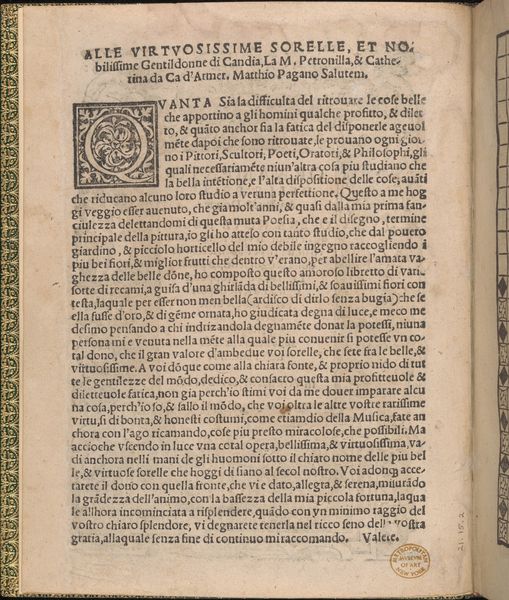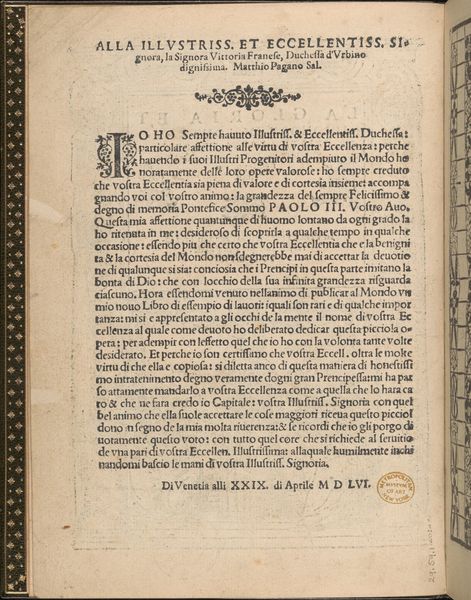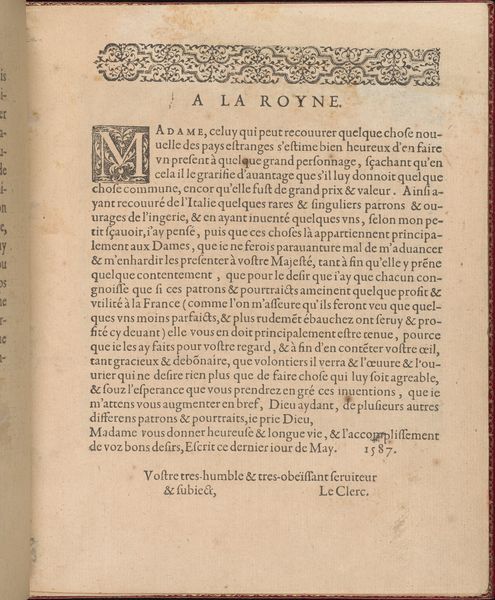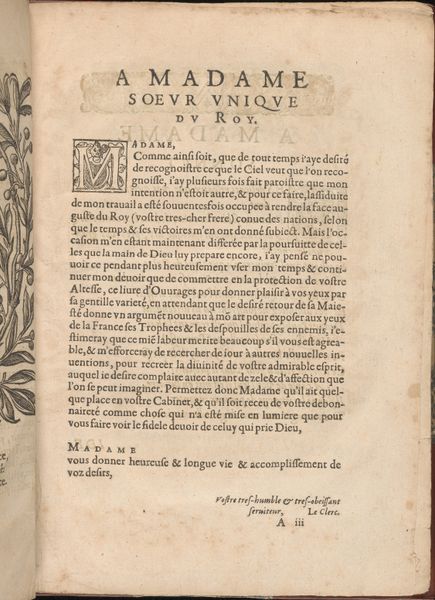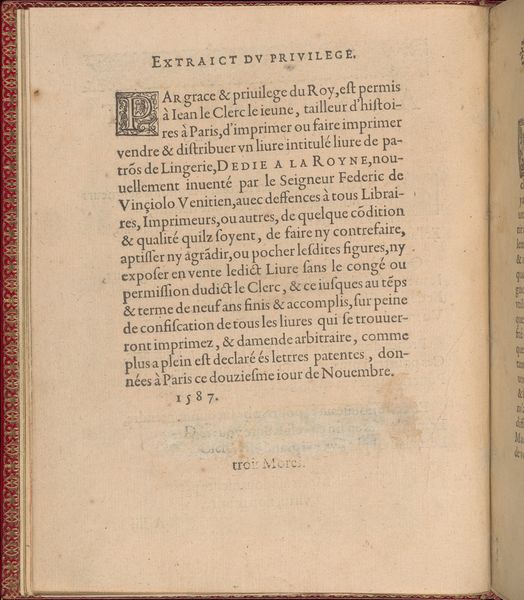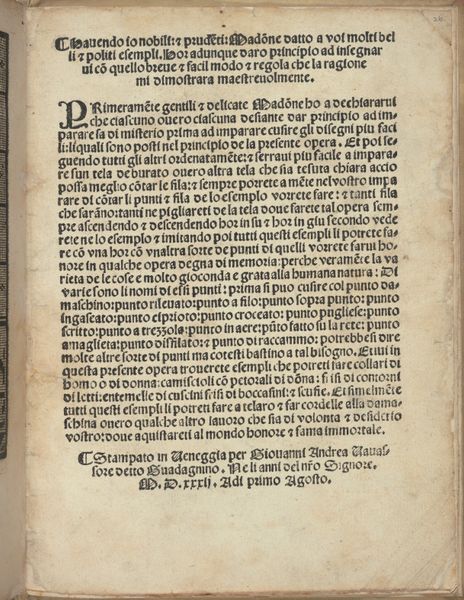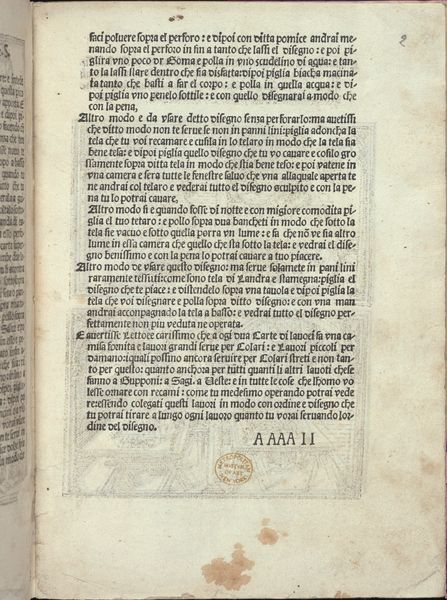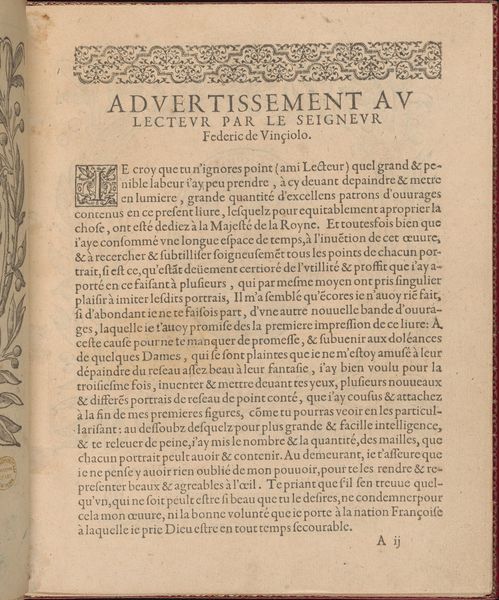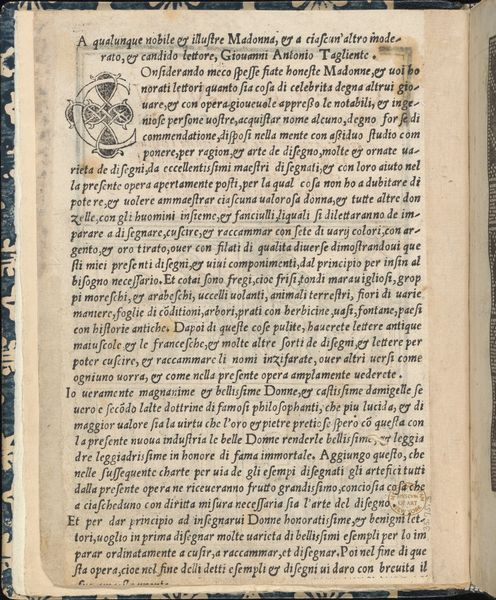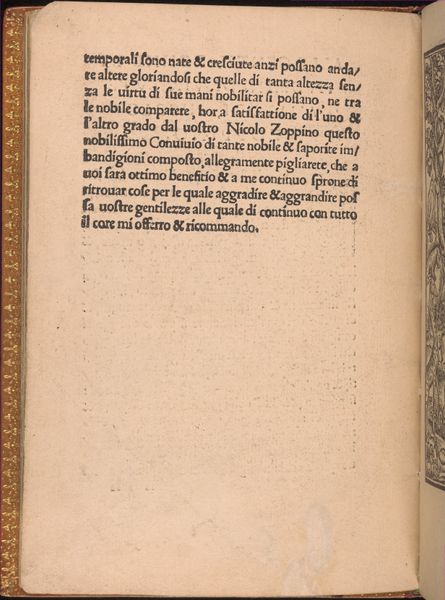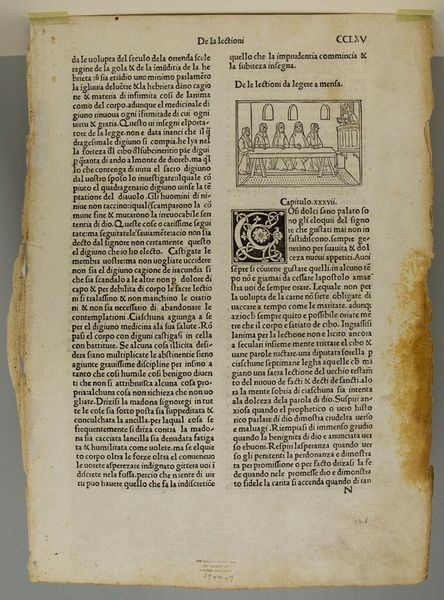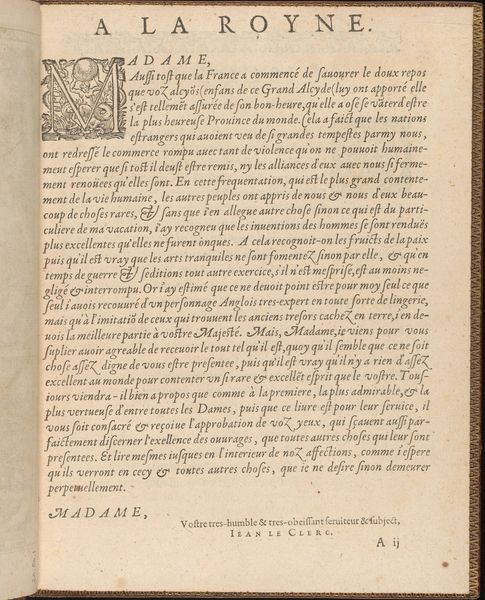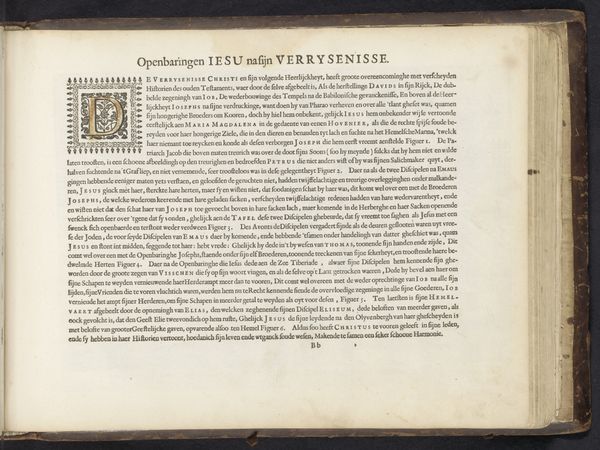
Giardineto novo di punti tagliati et gropposi per exercitio & ornamento delle donne (Venice 1554), title page (verso) 1554
0:00
0:00
drawing, print, paper
#
drawing
#
aged paper
#
parchment
# print
#
book
#
paper
#
11_renaissance
#
italian-renaissance
Dimensions: 7-5/8 x 6-3/8 x 1/4 in. (19.4 x 16.2 x 0.6 cm)
Copyright: Public Domain
Editor: Here we have a page from "Giardineto novo di punti tagliati et gropposi per exercitio & ornamento delle donne," published in Venice in 1554 by Matteo Pagano. It’s a title page, or rather, the verso of the title page from a book on embroidery patterns. It gives the impression of fragility due to the yellowing of the paper. What's your interpretation of its importance? Curator: From a materialist perspective, this isn’t simply a decorative design, but a key document about the labour and skill of women. These embroidery patterns weren’t just artistic expression; they represented a significant form of domestic production. The very act of producing this book highlights the social context and consumption patterns of the time. Editor: So, you're saying it reflects the intersection of craft, domesticity, and perhaps early forms of commercial publishing? Curator: Exactly! Consider the title itself. "Giardineto novo di punti tagliati et gropposi," translates to "New little garden of cut and knotted stitches". What does that suggest to you about the status of needlework during the Italian Renaissance? Editor: That embroidery was viewed as a sort of cultivated skill or art, maybe a genteel accomplishment, not just mere labour? Curator: Precisely. And notice the reference to “ornamento delle donne"—ornament for women. This shows needlework was seen as a way to improve their standing. We are dealing with female craftsmanship commodified, circulated, and even theorized, for commercial ends. Look, these designs enabled the making of fine commodities traded widely in Renaissance Europe. Editor: So beyond its aesthetic appeal, this page embodies a much broader history of female labour and economic participation? Curator: Indeed. By analyzing its materials, production, and distribution, we uncover the often-overlooked contributions of women to the economy and visual culture of the Renaissance. It encourages us to consider women not just as patrons or subjects of art, but as active creators. Editor: That is very thought-provoking! It reframes how one might approach similar artifacts and their socio-economic relevance in art history.
Comments
No comments
Be the first to comment and join the conversation on the ultimate creative platform.
